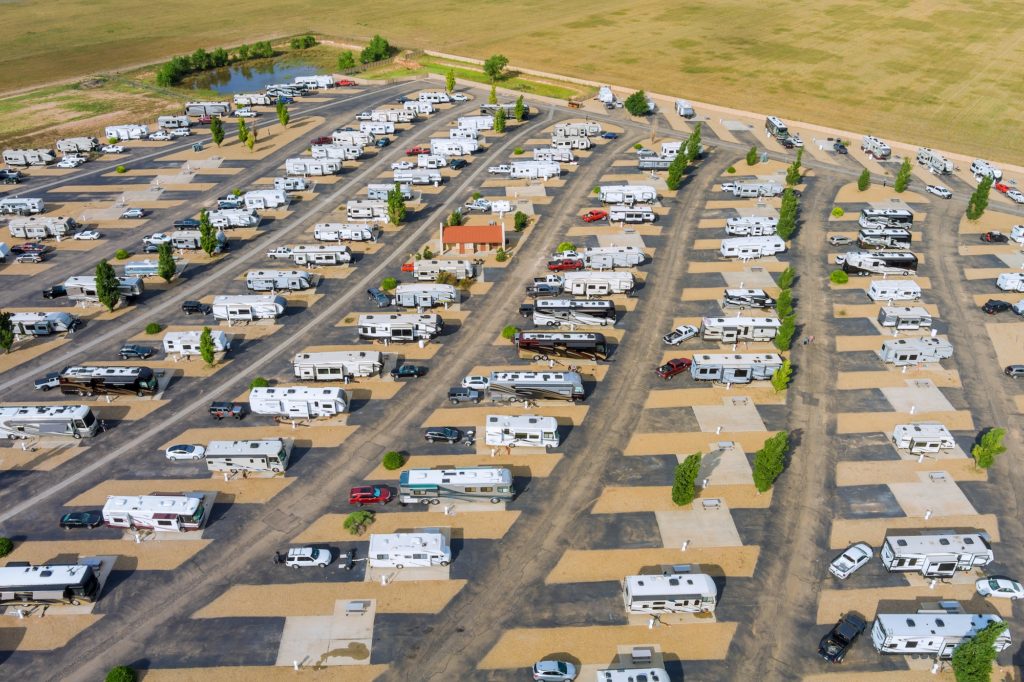Introduction
I have owned numerous types of investment property including single-family, industrial, office, land, retail, storage, and RV parks. The RV park industry is highly inefficient relative to the others. I will detail my observations and the data around each inefficiency in a series of RV Park Guy articles. This “Part 1” presents an introductory snapshot of the inefficiencies I see in the RV park market.
A Brief History
I bought my first home and started investing in real estate during the Great Recession. My wife and I saved some money during our first few years of marriage. When it came time to buy our first home, we chose a very well-located neighborhood that we thought was unreasonably cheap. Six months later, we purchased a second house one street over that we had toured the first time we visited the area. The second house was well-priced and the seller was motivated. We rented the house 7 days after closing the purchase.
That started my real estate career. I kept my regular job and invested part-time in single family rentals for the next few years. After building a small portfolio, I recognized the poor yield on equity that I was getting with most of my houses. I had a good problem – too much equity. Rather than doing cash-out refinancing of my properties, I decided to execute 1031 exchanges and buy some larger deals.
I quit my job when I acquired my first commercial real estate investment. That investment was a 7,000 SF industrial building that I bought with 1031 exchange proceeds from one of my rent houses. I bought a few more industrial buildings before broadening my experience into several other property types. Then, in 2017, a broker brought an RV park deal to me. The exceptional value of that first deal exposed me to the inefficiencies of the market. Years later, as an established RV park owner, I can share observations from the inside.
Elements of an Inefficient Market
Demand is High: In 2017, RV sales smashed previous records following 7 years of growth. Sales that year exceeded 500,000 units and $20 billion. RV sales declined in 2018-2019, but remain very high relative to historic data. It is estimated that 13 million families in the United States own an RV. Now in 2020, the effects of COVID-19 are changing the way people travel and RVing is emerging as a winner in this crisis.
Supply is Tight: Permitting and building RV parks is not as simple as developers think it should be, so supply remains tight. One of the largest park owners in the United States is Equity Lifestyle Properties and their 2018 10-K says “we estimate there are… approximately 8,000 RV properties (excluding government owned properties) in North America. Most of these properties are not operated by large owner/operators…”
Ownership is Fragmented: Most RV parks are owned by single property operators, or “Mom-and-Pop” owners. Fragmented ownership leaves gaps in the market where immaturity persists, thus affecting prices, debt, operations, and brokerage.
Mispricing Opportunities: Many Mom-and-Pop owners don’t recognize the full value of what they own. Oftentimes they haven’t kept accurate records and, therefore, pricing is loose. Couple that with relatively few brokers in the business and RV parks are ripe for mispricing.
Cap Rates are High: Even the RV park deals that are accurately priced offer greater yields than other property types. Investment yields have come down across the board, yet RV park cap rates have remained comparatively high.
Fewer Brokers and Buyers: One thing that sold me on the RV park business was the limited number of brokers and buyers. Too many eyes on too few deals limits the potential for a bargain. In the RV park world, there are fewer brokers and buyers and many off-market deals.
Debt is Difficult: With fewer players in the game, the RV park business does not have the debt options seen in other real estate. The extra work required to finance RV park deals is an opportunity for those who are resourceful.
Few Operational Norms: Standard and best practices are limited due to the nature of ownership. Without large property managers and widely-known best practices, the opportunity for sophisticated operators to increase value at poorly run parks is substantial.
What’s Next?
The inefficiencies identified here each deserve their own explanation and supporting data. This Part 1 will soon be followed by individual parts that cover each of these topics and make the case for why RV parks offer superior value to real estate investors.




